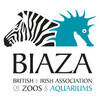There are many reasons to celebrate successes and exercise optimism. Jon Taylor (Director of Conservation Optimism) underlines the value of storytelling, framing, and hope:
I wrote my last blog for BIAZA four years ago, as Managing Director of Save the Rhino International. My role has since changed - I write now as the Director of Conservation Optimism, based at the University of Oxford - but my core message remains unchanged – the vital role of British, Irish and other European zoos and aquariums as leading conservation organisations in Europe.
This time last year we held our 2024 Conservation Optimism Summit, attended by 300 people, including some brilliant friends from BIAZA. But our regular work is on a smaller scale – publishing our weekly Seven Stories of Optimism, commissioning inspiring blogs and hosting skill-sharing webinars.
Our mission is to rebalance the conversation around today’s great environmental challenges. We do not challenge the existing framing – we are indeed, as the headlines say, in a state of ‘crisis’ and ‘emergency’. We are under no illusions about the scale and scope of the problem.
Yet there is another side to this discourse. Around the world, committed people, including many at BIAZA and EAZA zoos, devote their lives to protecting the natural world, and many of those efforts succeed. Conservation Optimism shares stories of conservation success not to supplant the language around ‘crisis’, but to counterbalance it: to support conservationists everywhere with news of real and sorely needed hope.
Our work is to influence people, to give them hope and agency. And through that work we have developed expertise in the use of communication and language to change how people feel and act. These same powerful tools can be used directly for conservation, to inspire people to understand the value of nature to their own lives and so protect it as a treasured resource.
Great communication is an age-old skill, but modern understanding gives us new insight into how communication tools work. For example, social science has helped us to understand universal human values, giving us a powerful new lens through which to better understand our audiences. Unsurprisingly, many of the most powerful tools are those that speak not to our intellect but to our emotions.
Storytelling is one of the most potent tools in the world of communication; stories are how humans understand the world. A well-told tale can fill us with joy, break our hearts, or inspire us to fight to the end.
But like all powerful tools there are dangers in misuse - global issues are complicated and stories are invariably simplifications. We must not surrender truth, however complex, for the sake of a good story.
Framing is another powerful tool. A positive framing can make us feel great; its opposite may trigger panic. Many communicators use the framing of ‘biodiversity crisis’ or ‘climate emergency’ to galvanise action, without considering that this language is designed to provoke a ‘fight or flight’ response. Few people feel able to fight huge environmental challenges. And they cannot flee from a global threat: where would they go? So most people freeze: they feel there is nothing they can do, so they do nothing. There are significant consequences to invoking ‘fight or flight’ reactions when people can do neither. Framing matters!
Meanwhile, the world’s diverse conservationists continue a fight that many have judged unfightable. Under these circumstances, overwhelm, hopelessness and despair are perfectly reasonable responses. The role of Conservation Optimism is to inspire hope and agency by reframing these crises - as great challenges, certainly, but not insurmountable: there is hope for success.
The world of conservation is moving very quickly. So much has changed in the ten years since the Paris Agreement on climate change was signed. It is no wonder that some conservation initiatives struggle to keep pace. We still see projects that approach conservation as a practice based purely on natural science, working locally on species and habitats, usually in other countries.
Of course, species and habitat conservation are vitally important. Work to protect intact ecosystems, and to re-wild where possible, is worthy of all support.
But in Europe the greatest environmental challenges are overuse of fossil fuels and unsustainable levels of consumption. And the greatest potential for global conservation impact therefore lies in changing human behaviour.
And in democracies, the main tools we have for influencing people’s behaviour are communication and persuasion. Conservation has become at least as much a social science as a natural science.
Strategic communication lies at the heart of the conservation effort. To be effective as conservationists, we need to understand the powerful tools of communication and how to use them for conservation success.
In our world of zoos and aquariums, this means that our conservation audience extends beyond traditional conservation partners to encompass the 30-odd million visitors that come to BIAZA zoos and aquariums every year. And our ‘conservation team’ includes not only specialist conservation and species staff, but also our educators and communicators. Some zoos already embrace this holistic conservation vision; for others, the required shift in focus is no small ask in these hard times. But we, better than most, know that without significant changes in the way people live, times will only get harder. And who is better placed to advocate and educate for a better future than our amazing zoos and aquariums?
Conservation Optimism partners with some amazing organisations, including zoos and aquariums. If this work inspires you, come work with us to help guide our wonderful and very damaged world to a healthier, safer, and more sustainable future.
- Jon Taylor
Jon Taylor is the Director of Conservation Optimism, based at the University of Oxford. He has over 30 years of conservation experience, with NGOs like Save the Rhino International and WWF, and as a consultant on international projects with the World Bank and the European Commission. But more importantly he has worked as both a zoo conservation project manager and a keeper. He works with many zoo partners and is privileged to speak at forums like the EAZA Conservation Forum. He has an elderly cat and sometimes lives in a van.
All blogs reflect the views of their author and are not necessarily a reflection of BIAZA's position
-
News
.png?w=100&h=100&zc=1&f=jpeg&hash=569206dfe5b61db6db17a94755e8620f) Oceanarium Bournemouth Unveils Stunning New Look for its Popular Underwater Tunnel Attraction 4th December, 2025Oceanarium Bournemouth is delighted to announce the refurbishment of its popular exhibit – the Underwater Tunnel, has re-opened today (Thursday…
Oceanarium Bournemouth Unveils Stunning New Look for its Popular Underwater Tunnel Attraction 4th December, 2025Oceanarium Bournemouth is delighted to announce the refurbishment of its popular exhibit – the Underwater Tunnel, has re-opened today (Thursday… -
News
.png?w=100&h=100&zc=1&f=jpeg&hash=427e253be3a87a1434179a2a7e8c926c) Two major firms join zoos campaign for sustainable palm oil 4th December, 2025Two UK food giants have committed to protecting the world's forests by becoming Sustainable Palm Oil Ambassadors. Chester Zoo has announced…
Two major firms join zoos campaign for sustainable palm oil 4th December, 2025Two UK food giants have committed to protecting the world's forests by becoming Sustainable Palm Oil Ambassadors. Chester Zoo has announced… -
News
.png?w=100&h=100&zc=1&f=jpeg&hash=fa0d5dd3a6bd3e076ecea0cb926291e1) Blog: piece by piece - the building blocks of conservation planning 3rd December, 2025Zoo conservation comes in many forms. In this week's blog, Paul Bamford (Chester Zoo) and Jamie Copsey (CPSG) write in from Colombia on elevating…
Blog: piece by piece - the building blocks of conservation planning 3rd December, 2025Zoo conservation comes in many forms. In this week's blog, Paul Bamford (Chester Zoo) and Jamie Copsey (CPSG) write in from Colombia on elevating…

.png?w=100&h=50&zc=1&f=jpeg&hash=9d891de1f3e9832561602cfd5b0ff31c)

